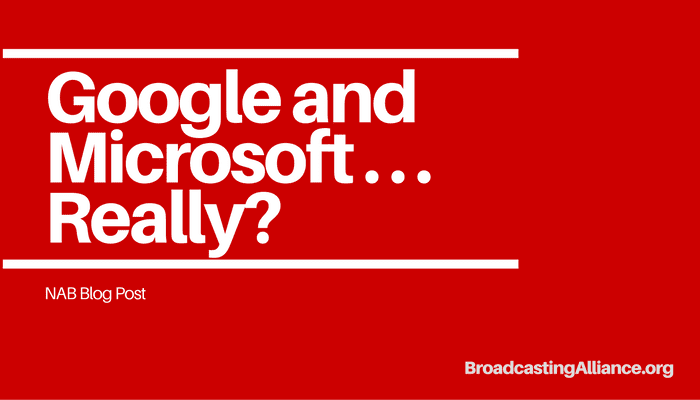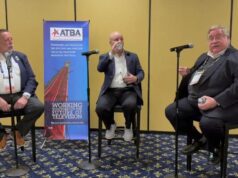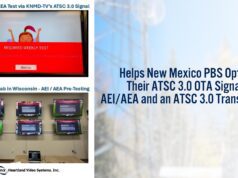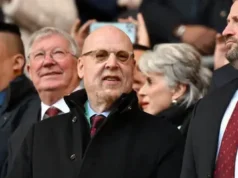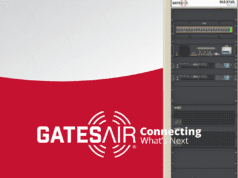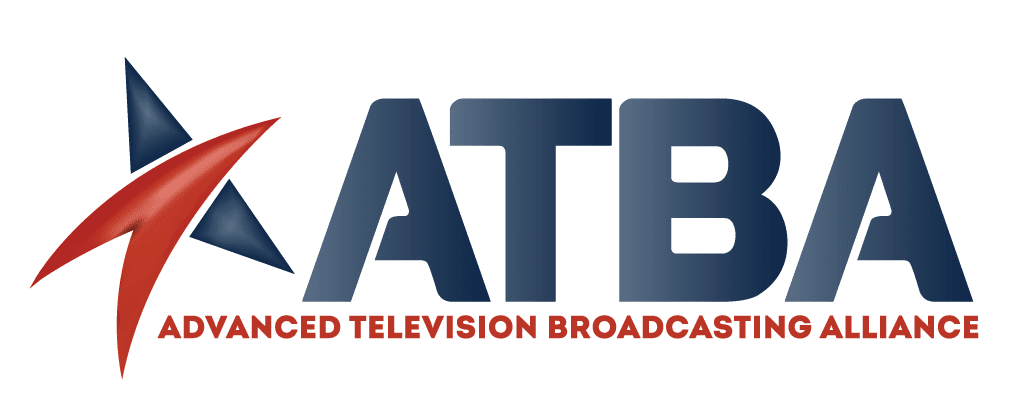alisonneplokh
As the broadcast TV spectrum incentive auction inches closer to its conclusion, Google’s so-called “vacant channel” (although more properly known as “Google channel”) proposal has once again crept out of the shadows. The proposal, for those who may have let this debacle fade from their memories, is that before thousands of low-power television stations and TV translators (we’ll just say LPTVs for simplicity) displaced by the incentive auction are allowed to find new channels to continue serving viewers, they must ensure there would be at least one channel available for unlicensed – or Google’s free – use. This time, the Open Technology Institute (OTI), Microsoft and Public Knowledge are carrying Google’s water. Perhaps inspired by the fall broadcast television lineup, Google and Microsoft are angling for “Designated Survivor” status.
“Don’t worry,” they say, “our Google channel proposal won’t actually take LPTV stations off the air, as there is plenty of spectrum to go around. And besides, what is more important, television or internet?” Let’s unpack that argument a little.
Plenty of spectrum to go around? If that were actually true, Google and Microsoft wouldn’t need a policy change; they could simply use the available space under the FCC’s existing TV white spaces rules. They know, however, that the incentive auction will send many LPTVs scrambling for new homes and that some markets are going to have such scarce spectrum availability that, even without finding homes for all of the LPTV stations, there will not be enough room for unlicensed operation in the TV band. To try to get around this unfortunate reality, in March, Google submitted a heavily flawed study that assumed the FCC would need to buy nearly twice as many stations as it must in reality to reach a conclusion that the impact would be minimal. Sure, if the government spends extra tens of billions of dollars to purchase spectrum, Google and Microsoft could get access to a little more “free” spectrum. And, of course, Google is conspicuously not bidding in the auction, either. Again, if Google was right – that its was a cost-free proposal – then what would be the point? Unlicensed devices can operate in the TV bands already where space is available. The Google channel proposal is really about turning away existing LPTV stations to make room for unlicensed Google devices.
Which is more important? Usually that’s not even a question when you are addressing whether an unlicensed service should disrupt an incumbent licensed service, but okay, we’ll bite. Let’s first remember that, in 2008, Google promised “Wi-Fi on steroids” by the 2009 holiday season. Now having just concluded the 2016 holiday season, there are still fewer than 700 unlicensed devices operating in the TV bands, nationwide. Total. The TV white spaces rules have been in effect for nearly a decade, there are plenty of channels available and three times as many people bought the now-discontinued $10,000 18 karat gold Apple Watch than have bought TV white spaces devices.
In contrast, there are hundreds of thousands of viewers relying on the signals of thousands of LPTV stations. For many people, LPTV is the sole source of televised news and entertainment. While unlicensed devices have others neighborhoods – 2.4 GHz, 5.8 GHz, now 3.5 GHz – the spectrum at issue is television’s only home.
Also, we can’t help but point out that because the “open” in Open Technology Institute apparently only refers to their level of disregard for television viewers throughout the country, OTI did not file in the dockets dedicated to the issues they have raised. The filing also includes references to discussions about eliminating critical protections for licensed operation in the TV bands and a flimsy dismissal of NAB’s analysis of errors in the white spaces databases on the basis that the nearly non-existent deployment of TV white spaces devices has not yet caused harmful interference. These are open issues in two separate dockets in which OTI failed to file.
Now we are beginning to see why Oxford Dictionary labeled “post-truth” as the 2016 international word of the year. Hopefully, 2017 can be the year when truth doesn’t mean a lie, open doesn’t mean concealed from the public and unlicensed doesn’t mean kicking off licensed services upon which the public heavily relies.https://blog.nab.org/2017/01/06/google-and-microsoft-continue-pushing-plan-to-seize-channels-that-actually-arent-vacant/





